Carrots Growing Stages
Carrots hold a special place in gardens and kitchens around the world. Their sweet, crunchy roots add color and nutrients to many dishes. Yet few gardeners witness the full life cycle of these plants from seed to flower. I have explored the carrots growing stages, offering tips for cultivation success.
Carrots take around 55-80 days from planting to reach maturity, producing edible taproots. Their life cycle spans two years, going from seed to flower and back to seed again. By understanding the conditions carrots need and their developmental timeline, I can better nurture these nutritional powerhouses.
Conditions for Growing Carrots
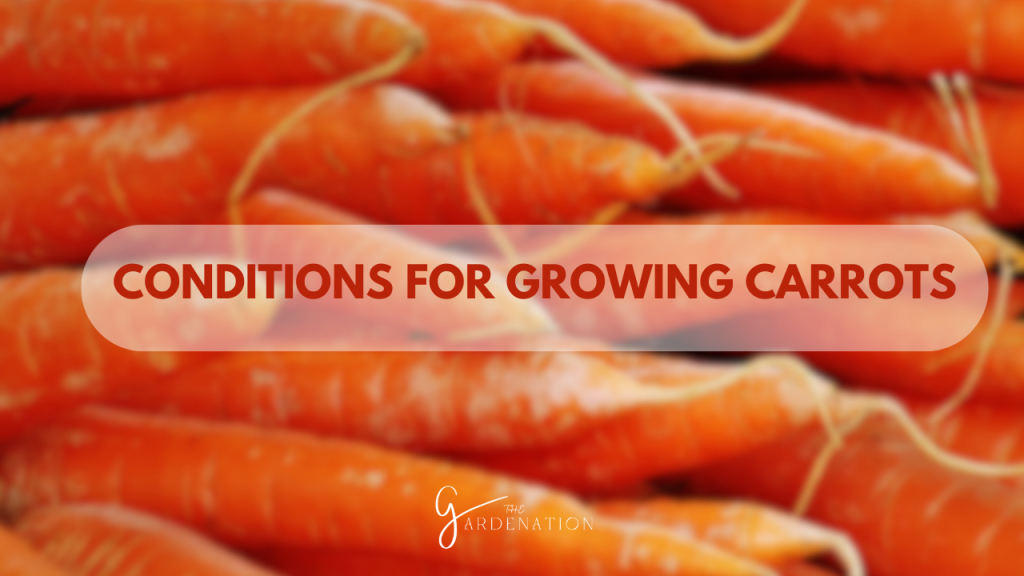
Carrots thrive in USDA Hardiness Zones 3-10 as a cool weather crop. They grow best when daytime temperatures sit around 60-70°F. In most regions, gardeners sow seeds in early spring for summer harvests or late summer for fall/winter harvests.
The soil makes all the difference for shapely carrot roots. These plants demand loose, sandy soils with no obstacles to disrupt their downward growth. Adding compost to heavy soils or growing carrots in raised beds improves drainage and root development. Carrots also need at least 6 hours of direct sunlight daily. Consistent moisture during germination and early growth prevents stunted, woody roots.
Once seedlings establish, avoid disturbing the soil around the delicate taproots which can fork or deform when damaged. Careful weeding and mulching helps here.
Carrot Plant Growth Timeline
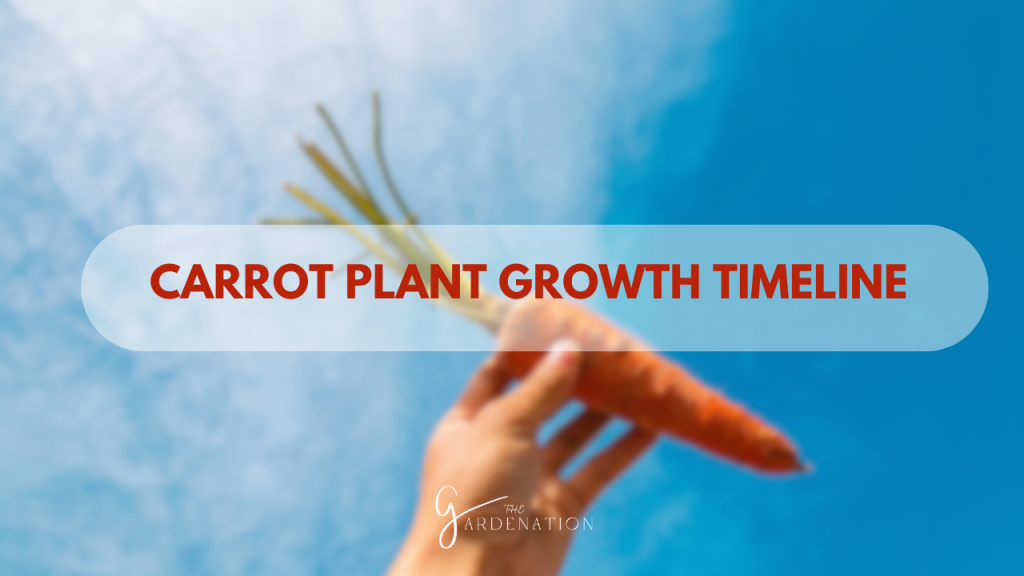
The University of Illinois created an incredible time-lapse video showing carrots rapidly growing from seed to harvest size in a mere 75 days. Their quick development hides the complex changes happening underground as plants transition through various life stages in their short lifespan.
While most carrot types take 55-80 days to mature, some specialty varieties take 100 or more days. Factors like variety, soil quality, and growing temperatures impact overall timelines. Among the many garden carrot types, Danvers, Scarlet Nantes, Chantenay, and Imperator remain the most common.
Carrots Growing Stages
1. Seed Germination
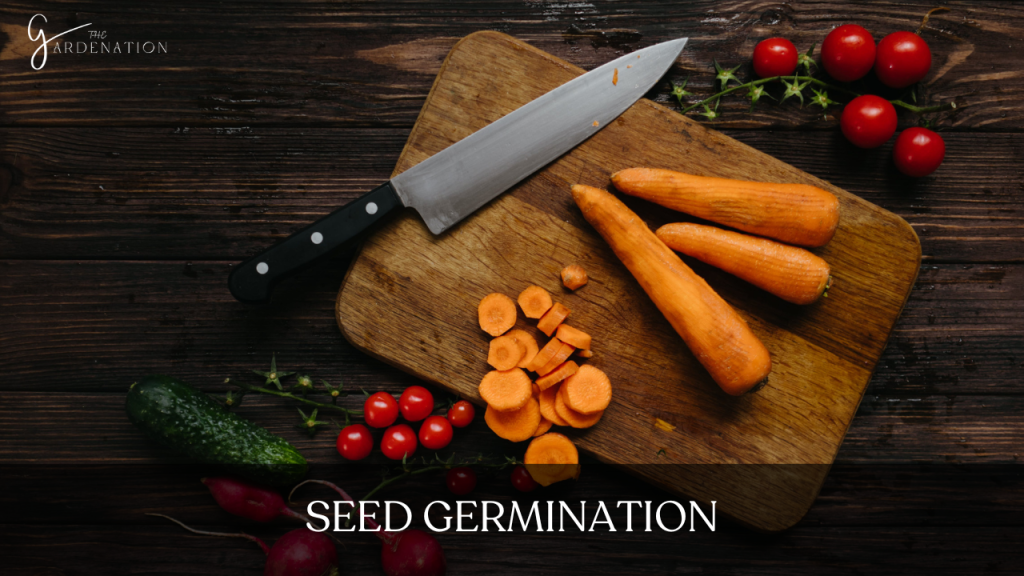
Carrot seeds form inside the dried flowers of mature carrot plants. These tiny, pointed seeds can remain viable for up to 3 years when stored properly.
During germination, the seed coat softens as it absorbs water from the soil. Next, the primary root emerges from the seed as the radicle. Soil temperatures between 55-65°F encourage the highest germination rates which typically occurs within 14-21 days. Without sufficient moisture, seeds will not germinate properly or may fail altogether.
2. Seedlings
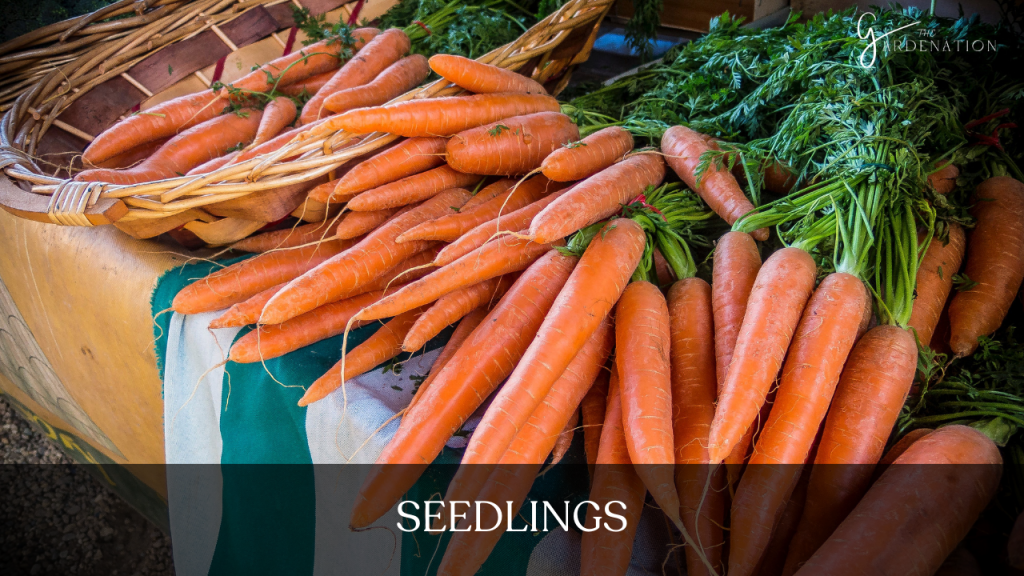
As dicots, carrot seedlings rely on two round cotyledons or seed leaves for early nourishment. They photosynthesize sunlight to feed the baby plant until the first true leaves emerge up to 2-3 weeks later. By this stage, I start to see 1-2 inches tall sprouts. The seedlings soon shed their cotyledons as the taproot expands underground.
3. Vegetative Growth
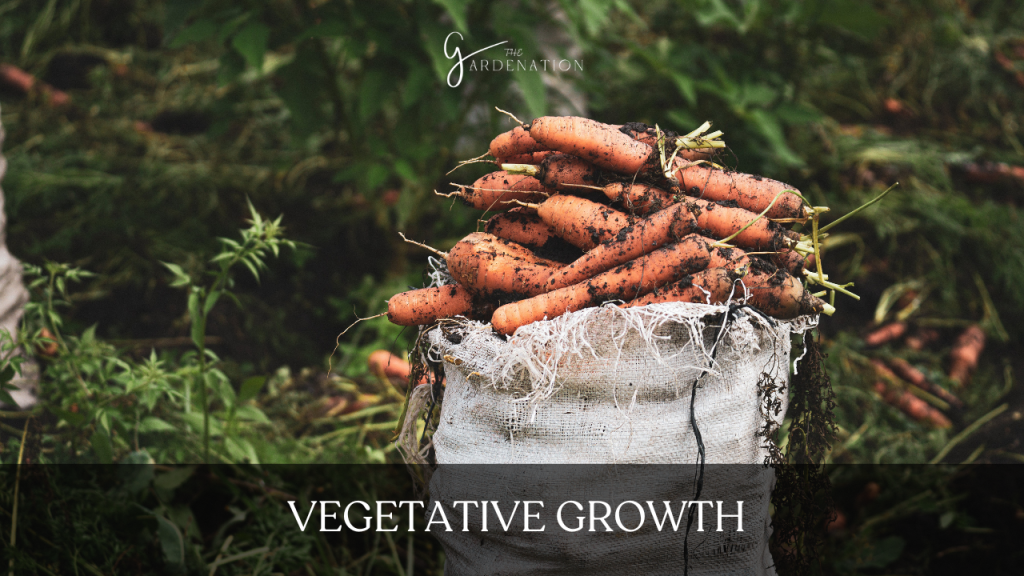
Around 4 weeks after planting, carrot foliage takes on a noticeably frilly appearance. The leaves grow from a central crown, reaching upwards and outwards to capture sunlight. Varieties produce different leaf types. Danvers have sparse, upright foliage while Chantenay varieties exhibit more abundant leaves. All feature a coarse texture and toothed edges on their leaves.
If you want to know about Trees, you can visit: Fastest Growing Palm Trees
4. Root Development
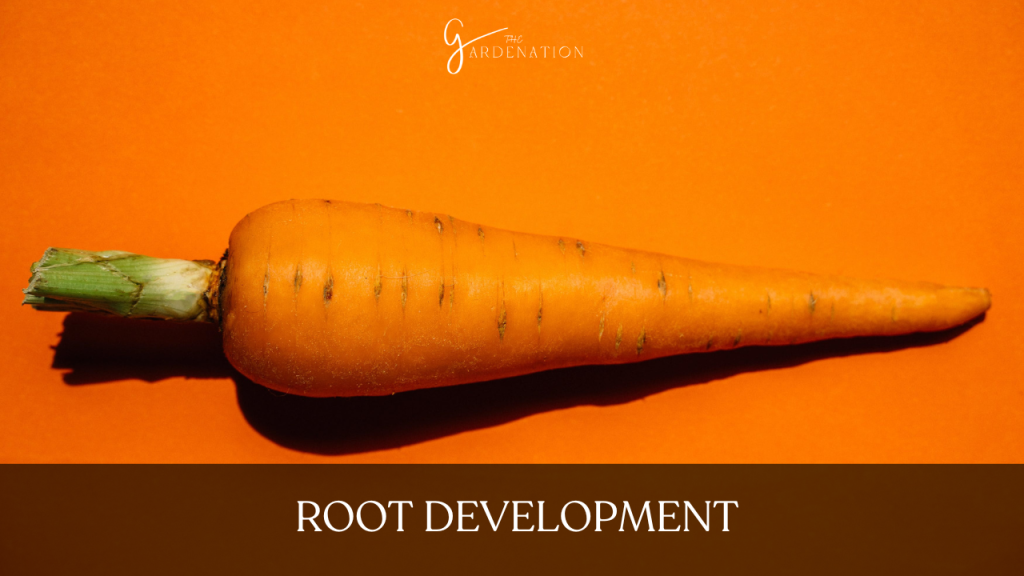
While leaves expand above ground, the taproot beneath continues growing downwards, expanding in width simultaneously. Tiny root hairs also emerge to help absorb soil nutrients and moisture. After 2 months, roots reach harvestable widths of 0.5-3 inches depending on the variety grown. Cold soil temperatures (55°F) optimize storage sugars and flavor compounds inside the maturing roots.
5. Flowering
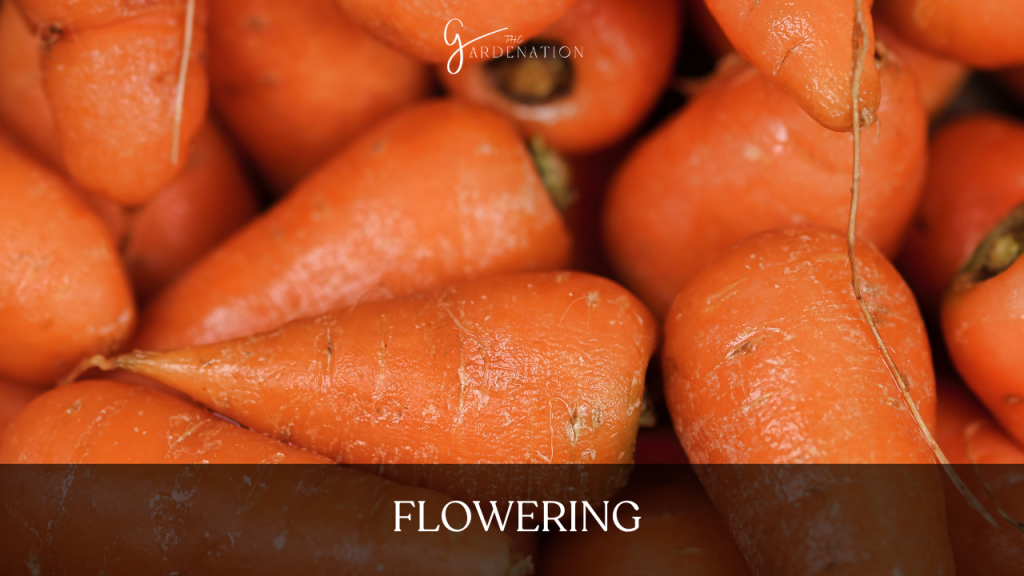
In the plant’s second season, declining daylight hours stimulate carrot plants that overwintered to flower. Upright stems emerge from the centers of the plants topped with umbrella-like flower heads called umbels.
The small white flowers attract beneficial pollinating insects. As a self-fertile plant, carrots can form seeds without cross-pollination. After seeds fully develop, the plant dies back, completing its normal two-year lifecycle.
Care Tips and Best Practices
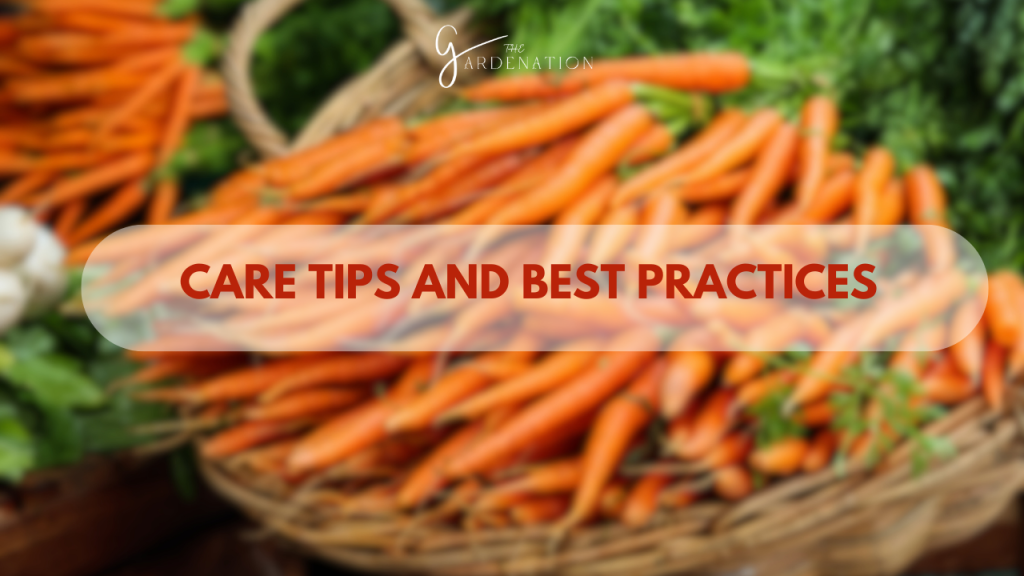
Carrots need little intervention when grown under the right conditions, but I take proactive cultivation steps to support healthy plants:
- I prepare soil 4-6 inches deep, mixing in aged compost to optimize drainage and nutrients before sowing.
- I water newly planted rows frequently with gentle spray to maintain even soil moisture, especially in hot weather.
- I thin young seedlings with scissors to proper spacing, disturbing the soil as little as possible.
- I apply organic nitrogen fertilizer halfway through the growing season to fuel foliage and root growth.
- I weed carefully by hand and use organic mulches to reduce competition near surface roots.
Harvesting Carrots
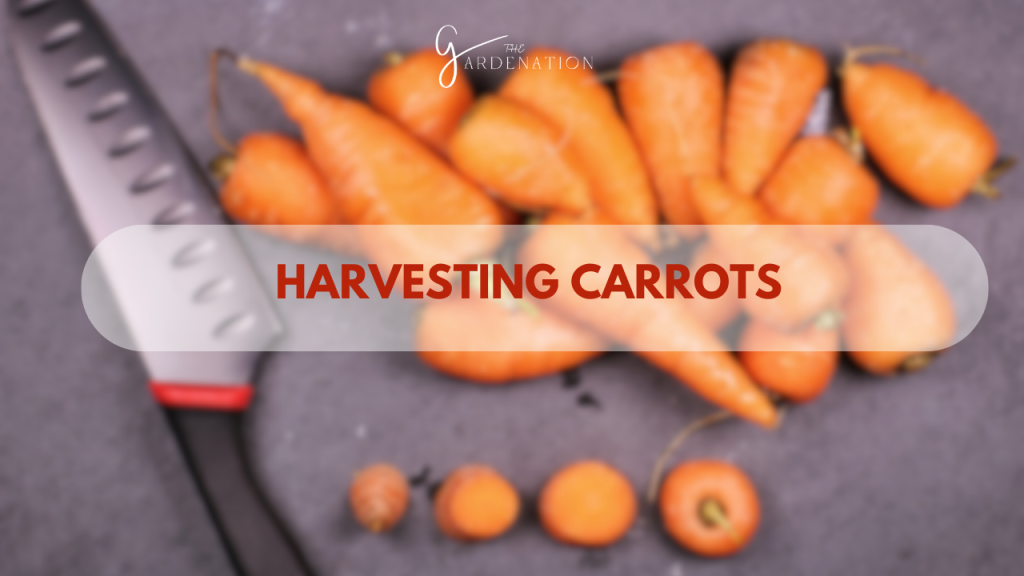
Checking taproot diameter offers the best gauge of carrot readiness. I gently dig around crowns, rubbing off soil to check sizes. Average days to maturity also serve as useful benchmarks. Baby carrots can harvest as soon as 50 days from planting while full-sized winter storage varieties need 80 or more days to size up.
Flavors peak during cool weather in fall and spring crops. Extended freezes and temperatures above 80°F for long periods negatively impact taste and texture. I harvest all mature carrots before heavy frosts set in.
Frequently Asked Questions
How do you know when carrots are ready to harvest?
There are a few ways to check carrot readiness. I gently dig around crowns and rub off soil to check taproot width – they should reach their expected mature size for the variety grown. Baby carrots may harvest as soon as 50 days from planting while larger winter storage varieties need 80 days or more to size up. Also look for foliage to slow growth and turn brown at the soil line when roots finish bulking up.
What happens if you let carrots flower and go to seed?
During their second season, carrot plants send up tall, upright stems topped by umbrella-shaped flower heads. I try allowing biennial carrots to flower to reduce the quality of roots which become woody and bitter tasting after plants bolt. However, letting a few plants go to seed provides a free source of seeds for future plantings.
Can you replant carrot tops to grow more carrots?
No, carrot tops lack the taproot structure to regrow into new carrot plants. These leafy tops detach easily from the roots and lack embryonic tissue needed to form new plants. However, the tops remain edible and provide a great source of nutrients when added to stocks, soups, and green juices.
What causes carrot roots to fork or split?
Carrots form forked or split roots when their taproots hit obstacles while growing downwards. Rocks, compacted soil, high water tables, or damage from early harvesting attempts all commonly cause forking issues. To prevent problems, improve soil to a depth of 12 inches, wait to harvest, and disturb plants as little as possible while they establish roots.
How long does it take to grow carrots from seed?
Carrots average 55-80 days from planting seeds to harvesting roots. But exact durations depend on variety, soil quality, and growing temperatures.
What is the full life cycle of a carrot plant?
Carrots are biennial plants with a two year life cycle. In the first season they produce foliage and taproots. Overwintered plants flower, set seed, and die in year two, completing their lifecycle.
Conclusion
Carrots go through many changes as they grow from tiny seeds into sweet, crunchy roots. First, the seeds sprout leaves while sending a taproot down into the soil. Over time, the roots lengthen and widen as the green, frilly foliage reaches up towards sunlight. After several months, some carrot plants even produce delicate white flower umbels during their second year of growth before going to seed and completing their life cycle.
Cultivating carrots successfully means understanding what they need – loose soil, cool temperatures, consistent moisture. With the right care, gardeners can unlock the full potential of these nutritious roots. Whether you’re new to growing carrots or an experienced gardener, appreciating the various life stages of this beloved vegetable can help improve cultivation and enjoy more abundant harvests.
The journey from seed to flower reveals the wonder of nature’s processes at work right below the soil’s surface. By supporting carrots’ growth requirements, we play an active role in that wondrous transformation.

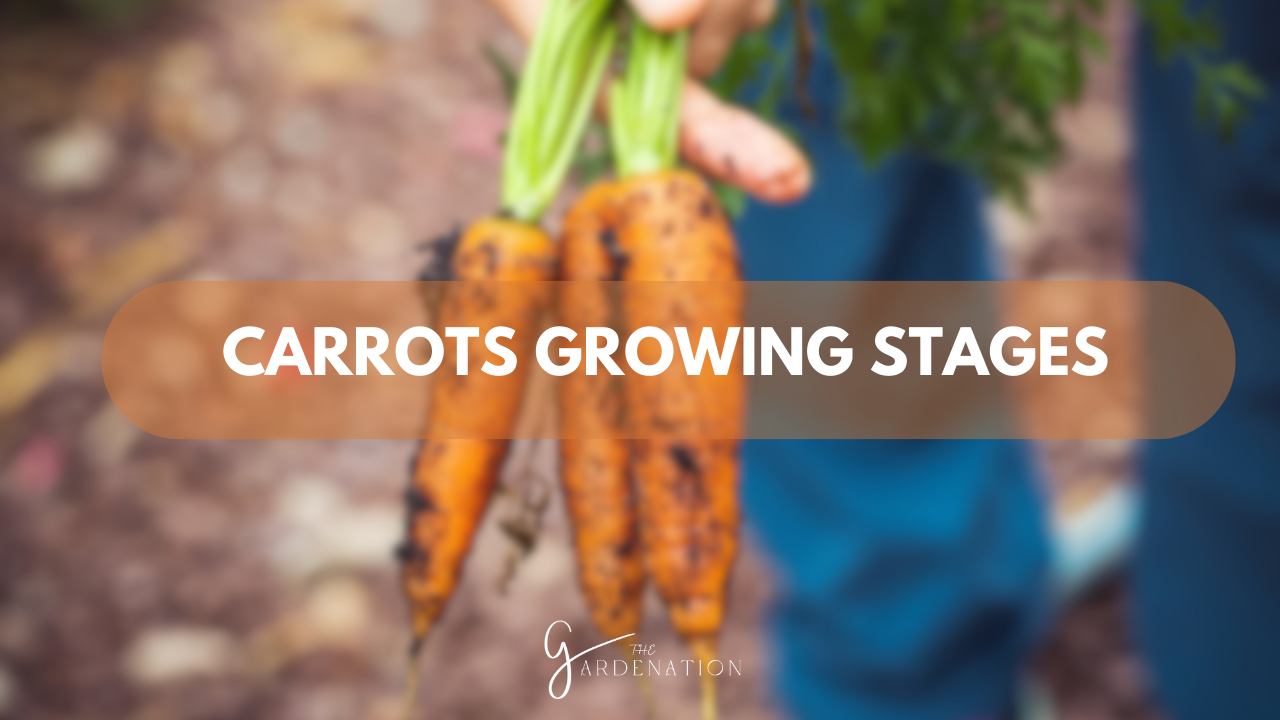
One Comment